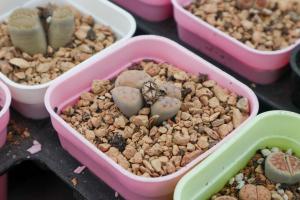When to Plant Fruit Trees in Connecticut
Connecticut is well-known for its apple, peach, and pear orchards. The state offers favorable growing conditions for various fruit trees, making it an ideal location to plant and cultivate such trees. However, planting fruit trees in Connecticut requires proper timing, preparation, and care. This article will discuss when to plant fruit trees in Connecticut and essential tips to help ensure successful planting and growth.
Best Time to Plant Fruit Trees in Connecticut
The best time to plant fruit trees in Connecticut is in the early spring, preferably in April or May, when the soil is warm enough, and the air temperature is mild. This period allows the tree roots to grow and establish before the summer's heat and drought come along, increasing the trees' chances of survival. However, planting during the dormant period in the late fall or winter is also possible, but more protection may be needed for the young and fragile trees.
Selecting the Right Fruit Trees
When considering planting fruit trees in Connecticut, it's essential to choose the right type of tree that is well-suited to the state's climate and soil conditions. Fruit trees that do well in Connecticut include apple, peach, pear, cherry, plum, and apricot. Additionally, selecting the right cultivar that is compatible with the state's growing conditions will help ensure healthy fruit tree growth and yield.
Preparing the Planting Site
The planting site preparation is essential for the successful growth and yield of fruit trees in Connecticut. Choose a sunny location with well-drained soil and adequate air circulation. Avoid planting in low-lying areas prone to frost and cold pockets. The planting hole should be two feet wider than the root ball and deep enough to accommodate the tree's root system. Mix the excavated soil with compost and organic matter and use it to backfill the hole, filling it to ground level. Then create a 2-3 inch soil mound around the tree's base to improve water absorption and drainage.
Planting and Care Tips
When planting fruit trees in Connecticut, make sure that the tree is straight and vertical, and the root crown is at ground level. Proper planting depth is crucial in promoting healthy tree growth. Water the tree thoroughly to settle the soil around the roots and remove any air pockets. Mulch the planting area to retain moisture and suppress weeds, but ensure that the mulch does not come in contact with the tree's trunk. Fertilize the tree with a balanced fertilizer once in the spring and again in late summer or early fall.
Pruning, thinning, and disease control are essential components of fruit tree care in Connecticut. Pruning promotes healthy tree growth and fruit production, while thinning helps to prevent overproduction, leading to smaller fruit size and compromising tree health. Disease control measures include removing dead, diseased, or damaged branches and using appropriate fungicides or insecticides if necessary.
Conclusion
In conclusion, planting fruit trees in Connecticut can be a rewarding experience, provided you follow proper planting and care procedures. The best time to plant fruit trees in Connecticut is in early spring, and choosing the right tree type and cultivar is crucial. Proper preparation of the planting site, adequate watering, mulching, fertilizing, pruning, and disease control are essential components of fruit tree care in Connecticut. With these tips, you can enjoy healthy and bountiful fruit tree yields for years to come.

 how many times do yo...
how many times do yo... how many planted tre...
how many planted tre... how many pine trees ...
how many pine trees ... how many pecan trees...
how many pecan trees... how many plants comp...
how many plants comp... how many plants can ...
how many plants can ... how many plants and ...
how many plants and ... how many pepper plan...
how many pepper plan...































